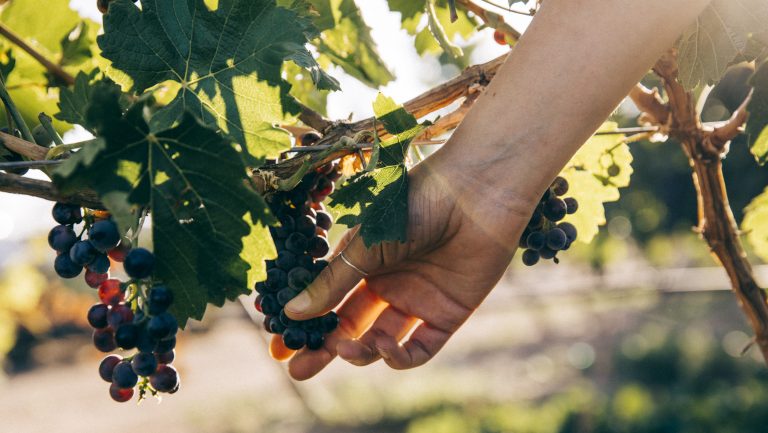In 2029, New Mexico will celebrate 400 years since Mission grapes were first planted along the banks of the Rio Grande by Franciscan monks to make sacramental wine. It’s the oldest wine growing region in the U.S. and, before Prohibition, the fifth-largest wine producing state. But widespread flooding in the early 1900s devastated the industry, and its significance ended there. Today, the well-versed wine drinker would be hard pressed to name a New Mexico producer aside from Gruet.
But the state has been quietly growing its wine industry in the past decade. In 2022, it generated approximately $1.12 billion in total economic activity according to a National Economic Impact Study by The National Association of American Wineries, up from $876 million in 2020. (Comparatively, Oregon’s industry generates close to $7.19 billion.) According to Maryel Lopez, the viticulture program coordinator at New Mexico State University (NMSU), growth is accelerating. “From what I’ve seen in the last year, the industry is growing way more than 10 percent a year; it’s exponentially growing,” she says. But beyond the numbers, there is burgeoning excitement amongst a new generation of producers ready to reimagine the state’s approach to viticulture.
“This next generation is retelling the story with a modern twist,” says Chris Goblet, the executive director of New Mexico Wine. “What we’ve seen happen in Oregon, Washington, and now New York and Idaho—it’s something that we have the capability of doing here if we can build enough momentum and energy around this industry.” That ongoing effort is what makes New Mexico an instructive case study in how a small wine-producing state might boost their wine production and statewide economy through investing in grape growing, galvanizing the winemaking community, and educating up-and-coming vintners.

Don’t miss the latest drinks industry news and insights. Sign up for our award-winning newsletters and get insider intel, resources, and trends delivered to your inbox every week.
Building on a Winemaking Legacy
New Mexico had its first wine growing renaissance in the 1980s, when winemakers such as Gilbert Gruet arrived largely from Italy, Germany, and France in search of commercial grape-growing land at more affordable prices than offered in California. Many planted French hybrids, such as Vidal Blanc and Baco Noir, that would thrive despite the cool nights, high elevation, and dry, rocky calcium-rich soil.
In 1986, Paolo D’Andrea was one such new arrival from the Friuli-Venezia-Giulia region of Italy. He brought four generations of grape-growing expertise, and is now widely referred to as the godfather of New Mexico wine. He is the largest supplier of grapes in the state, as well as, since 2001, the cofounder of Luna Rossa Winery along with his wife, Sylvia.
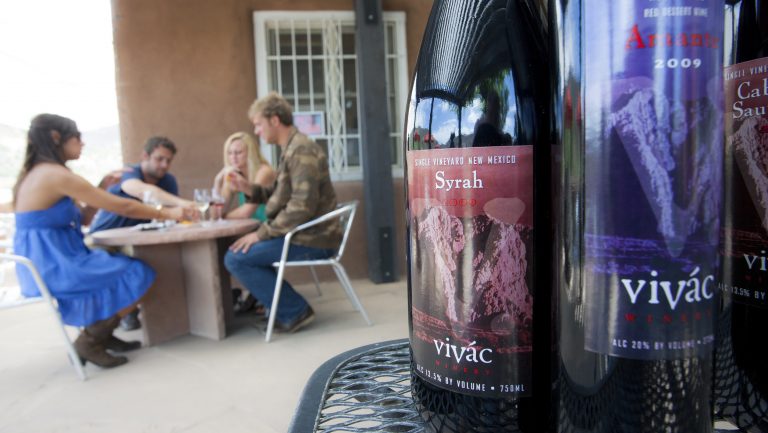
But it is the D’Andreas’ son, Marco, who is amongst the new generation of winemakers taking the helm. These include Chris and Jesse Padburg at Vivác, which launched in 1998, but in recent years has seen rapid expansion; Sean Sheehan, who founded Sheehan Winery in 2015; and Jasper Riddle, the winemaker and owner of Noisy Water Winery. “I came into the industry in 2010, and it was in disarray,” says Riddle, describing a then stagnating scene. “Around 2015, all these new winemakers are popping in, and you see some energy getting put back into the chests and the hearts of the older wineries.” While there wasn’t a single catalyst, Riddle theorizes that New Mexico’s affordability and the ascension of the craft beverage industry more generally helped attract these start-up winemakers to the region.
Then in 2016, two separate wine associations covering different parts of the state merged to become New Mexico Wine, and soon after launched the “Vivo Vino” marketing campaign. They stamped the revamped logo on T-shirts, glassware, and hats, positioning themselves not just as a trade association, which serves its members, but as a brand, which consumers can identify with. “It’s given a real unity to the wineries in New Mexico that all see themselves as part of this brand,” says Goblet.
For many, this sense of community was vital to the changes in the industry. “You got this really collaborative group of wineries working together to try to better the state, and subsequently, that made the wine a lot better … [through] talking about winegrowing and cross-utilizing resources,” says Riddle. “We understand it’s going to take all of us together to make a stand and to bring awareness and outside eyes onto our industry.”
Rewriting the Winemaking Script
Some winemakers put the recent growth down to reimagining the previous well-worn formula. “What ticked me off is everyone said you can’t make good wines in New Mexico,” says Robert Jaramillo, the cofounder and winemaker at Jaramillo Vineyards. “The problem was everyone was trying to make these European style wines out of hybrids.”
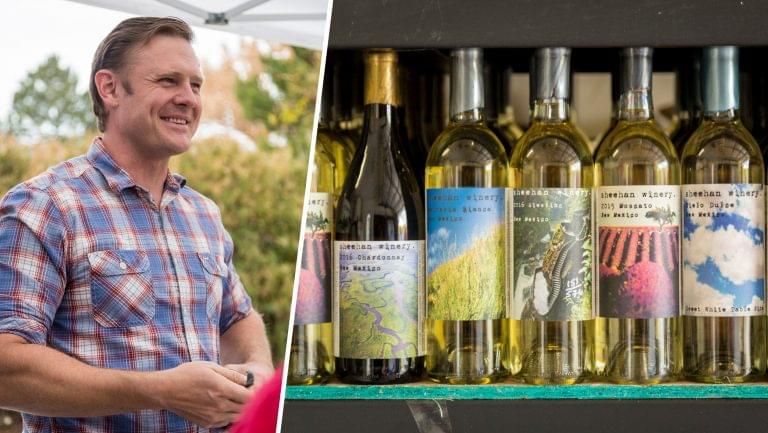
Sheehan agrees. “The biggest change in mindset is rather than doing an imitation of an established wine style—rather than doing our best version of Napa Valley or Bordeaux—we’re making New Mexico wines. We’re leaning into the distinct character of the grapes and the wines, which are going to be lighter, brighter, fruit forward, higher in acid, and really food friendly.”
Sheehan came up in the industry using “the Craigslist model,” buying all secondhand equipment, paid for from tips working in the service industry. He went from a couple of acres and 400 cases in 2015 to 12 acres and 8,000 cases in 2022, winning at state wine fairs. In October 2021, he opened a second tasting room in Albuquerque Old Town, next door to Noisy Water’s sixth tasting room, which sells local produce and cheese plates alongside the wine.
Neither would have been possible without an ordinance approved by the council in 2019 allowing taprooms and wine-tasting venues in the Old Town—a ban on alcohol sales outside of restaurants had been in place since the 1970s—which has helped revitalize the area for both tourists and locals. A reciprocity law, which passed in 2015, also allowed these tasting rooms to sell other New Mexico-made beers, wines, and ciders. “It’s a self fulfilling prophecy: if you want craft producers to succeed, give them more outlets, give them more shelf space,” says Goblet, who chaired the economic development committee responsible for developing the legislation. “A lot of what we’re doing is just a common sense approach to how you build capacity in an industry.”
Investing In the Next Generation
One of the biggest challenges is expanding grape acreage. That was the impetus behind the $1 million Vineyard Restoration Fund, which launched in 2022. It stimulates growth by reimbursing wineries for rootstock to either expand their existing vineyards or replace vines lost as a result of unavoidable events. The state legislature recognized the value of investing in the wine industry to generate taxes, create jobs, and boost the economy as a whole. “I sold this to our policy leaders, as ‘$1 million today will get you $10 million in taxes paid out over the next 10 years,’” says Goblet. “We need to convince our agriculture, tourism, and economic development partners that we are an industry that’s as exciting and fruitful as wind energy and the green economy.” Goblet also sees this as a recruitment strategy for winemakers from outside the state. “We’re giving away free money,” he says. “It’s too expensive to buy land in Napa or Sonoma; you can start a small winery here for a reasonable sum.”
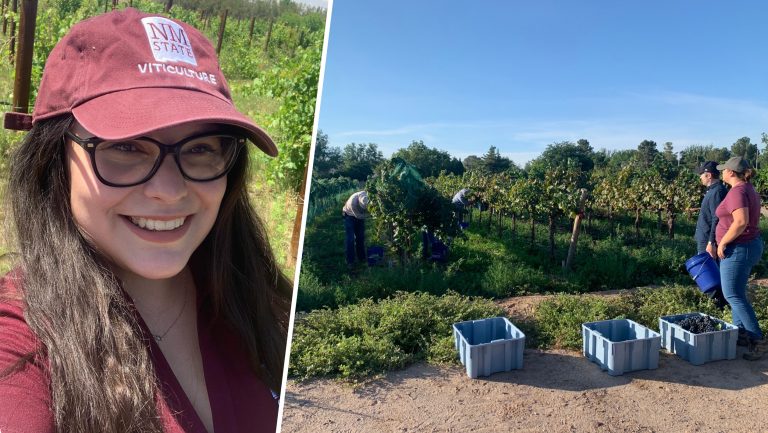
Education is the other vital piece of the puzzle when it comes to building lasting growth. NMSU’s viticulture program collaborates with New Mexico Wine to undertake applied research to inform the winegrowing efforts in the state, working with many winemakers, as well as offering winemaking workshops. Central New Mexico Community College just completed work on a state-of-the-art production facility for its new program in Wine Technology, which hopes to receive its first students in Spring 2023. The program was created as an employee pipeline to help staff the now 57 state wineries.
“We want to attract the young, curious minds of the wine world to be a part of this,” says Riddle. He’s excited about the amount of applicants Noisy Water receives for its internship program each round. “It’s not like I work with 17,000 tons of Pinot Noir; I have 50 different varieties, there’s a bunch of different programs, there’s all this crazy stuff happening—talk about having a test kitchen for young winemakers! It’s a heck of a place to do it.”
Rightsizing Growth
Despite the palpable enthusiasm on the ground, the majority of winemakers in the state are not yet exporting beyond state lines, with profits coming from direct-to-consumer sales, tasting rooms, and wine fairs. Noisy Water is amongst a handful of wineries exporting, but they’re taking a segmented approach, starting with Texas and Arizona. “We realize we’re never going to be California, no one has that opportunity,” says Riddle. “But how do we get put in this premium, boutique wine conversation instead?” Goblet agrees. “It’s going to take a long time to develop an export market, if I’m honest,” he says. “We need a lot bigger purse strings.” For Sheehan, who has a well-subscribed wine club, it’s not a priority. “The math just doesn’t work for us.”
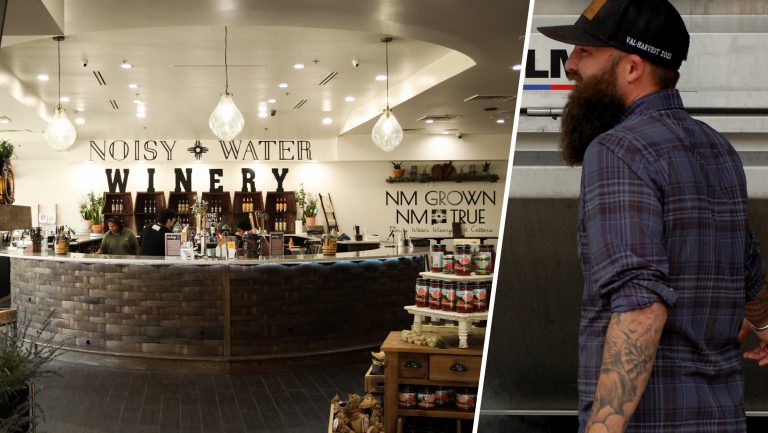
Instead, the strategy largely relies on the state’s 2.2 million population and liquid tourism. “Tourists are the main driver for local wine here,” says Ella Raymont, the wine director and wine shop manager at La Casa Sena Wine Shop in Santa Fe. “I think with emerging regions like in Texas and the Valle de Guadalupe in Mexico, it gives New Mexico some clout in terms of regional viability to grow healthy grapes for winemaking.” Tourist expenditure on the wine industry reached $29.33 million in 2022 and domestic tourism grew by record numbers in 2021, with events like the Sante Fe Wine & Chile Festival or Alburqurque’s Harvest Wine Festival attracting thousands of attendees.
But the prevailing attitude is there’s room for a lot more growth. And Lopez is willing to go the extra mile to support new winemakers. “Getting the word out, I think, is a key factor for the industry to grow and continue to be empowered,” she says. “If someone is interested in getting a vineyard set up or if they have vines that they want to recover, we’re here to help.”

Dispatch
Sign up for our award-winning newsletter
Don’t miss the latest drinks industry news and insights—delivered to your inbox every week.
Tyler Wetherall is the senior editor for SevenFifty Daily and the Beverage Media Group publications. Her drinks journalism has appeared in publications including Punch, The Guardian, Condé Nast Traveler, Thrillist, and The Spirits Business, which awarded her the Alan Lodge Young International Drinks Writer of the Year. Tyler is also the author of No Way Home: A Memoir of Life on the Run, and her first novel, Amphibian, is forthcoming. Follow her on Instagram at @tylerwrites.

